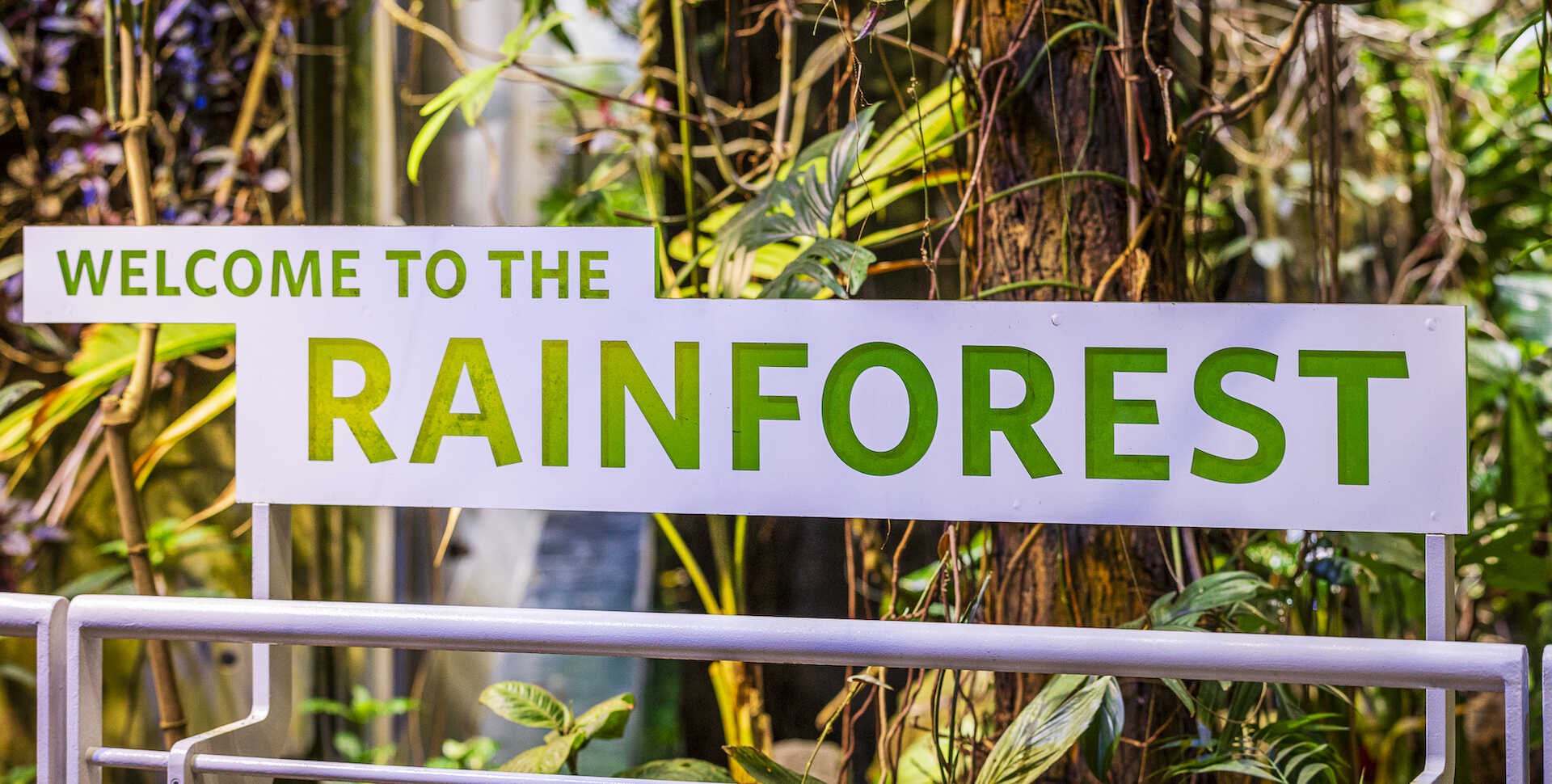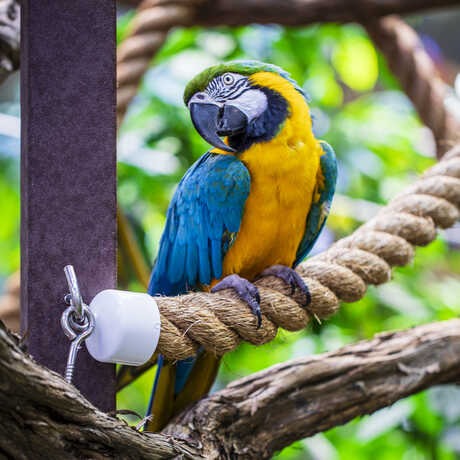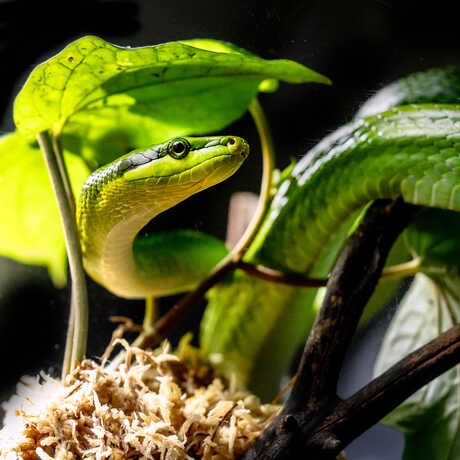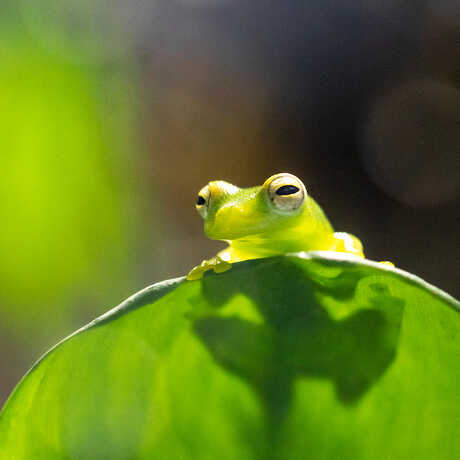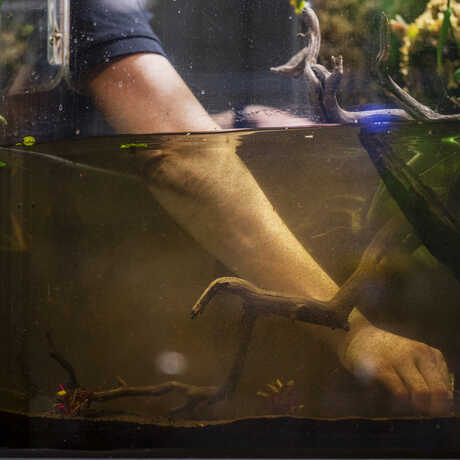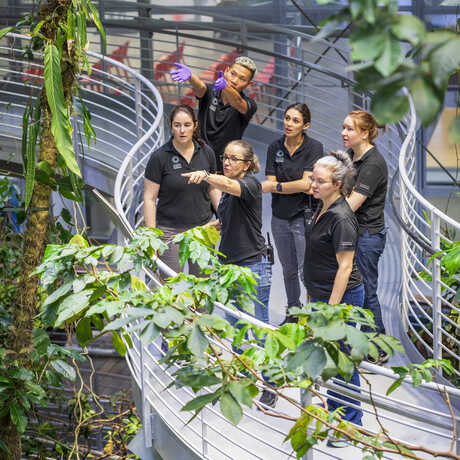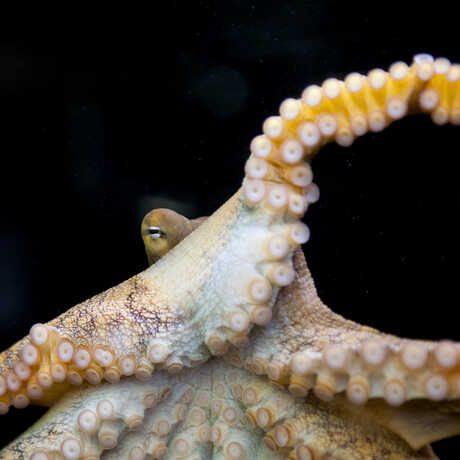Welcome (Back) to the Jungle: Osher Rainforest Is Open!
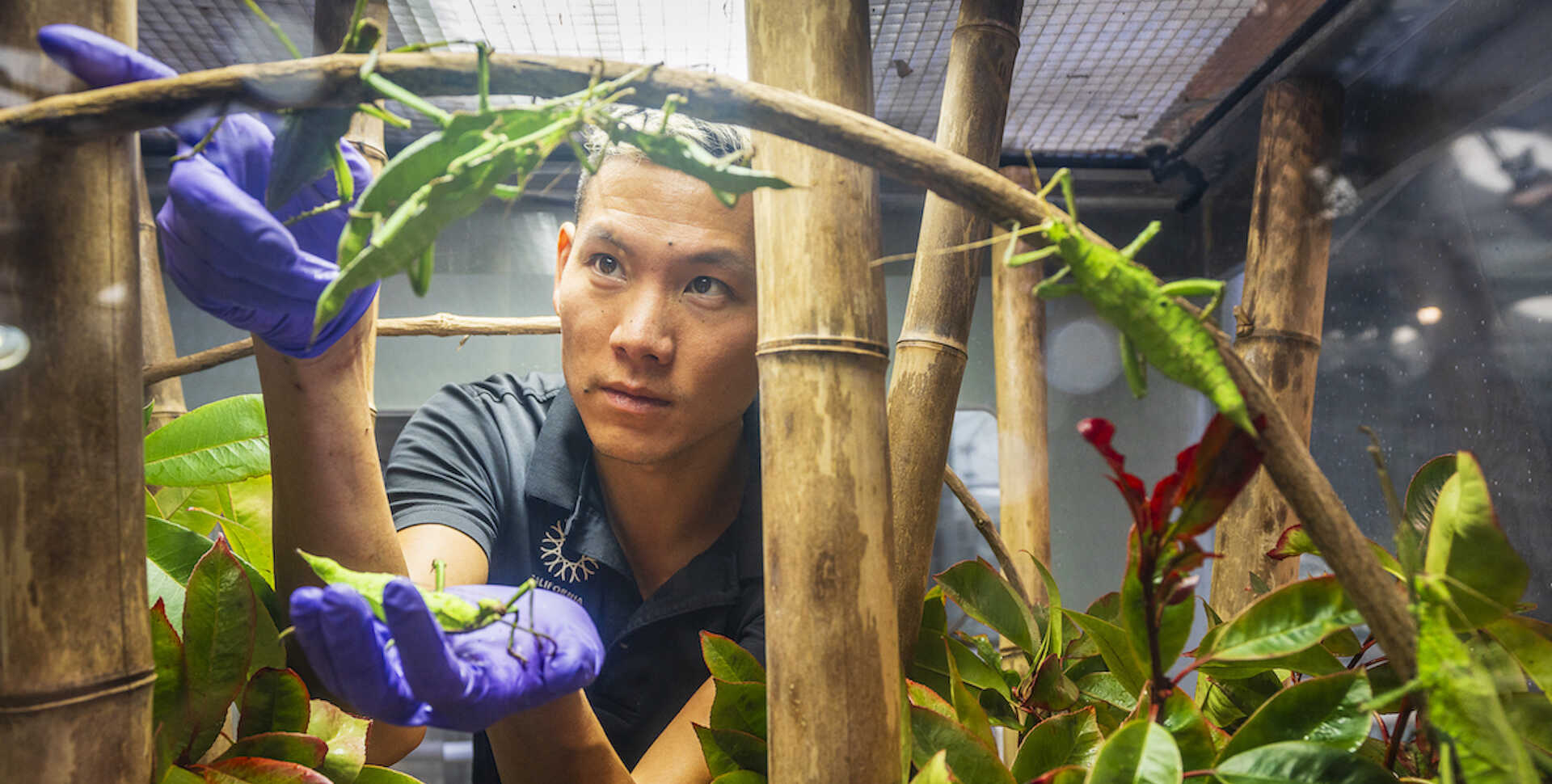
Words by Liz Lindqwister, photographs by Gayle Laird and Nicole Ravicchio.
It’s been nearly three months since Osher Rainforest closed for infrastructure maintenance: Animals left their enclosures, water leaks were patched, stairs were rebuilt, and the dome’s characteristic glass received a much-needed scrubbing. Now, tropical butterflies, frogs, snakes, ants, and birds are among the over 1,600 animals making their grand return to the rainforest’s lush dome.
Here’s what we’ve been up to behind the scenes.
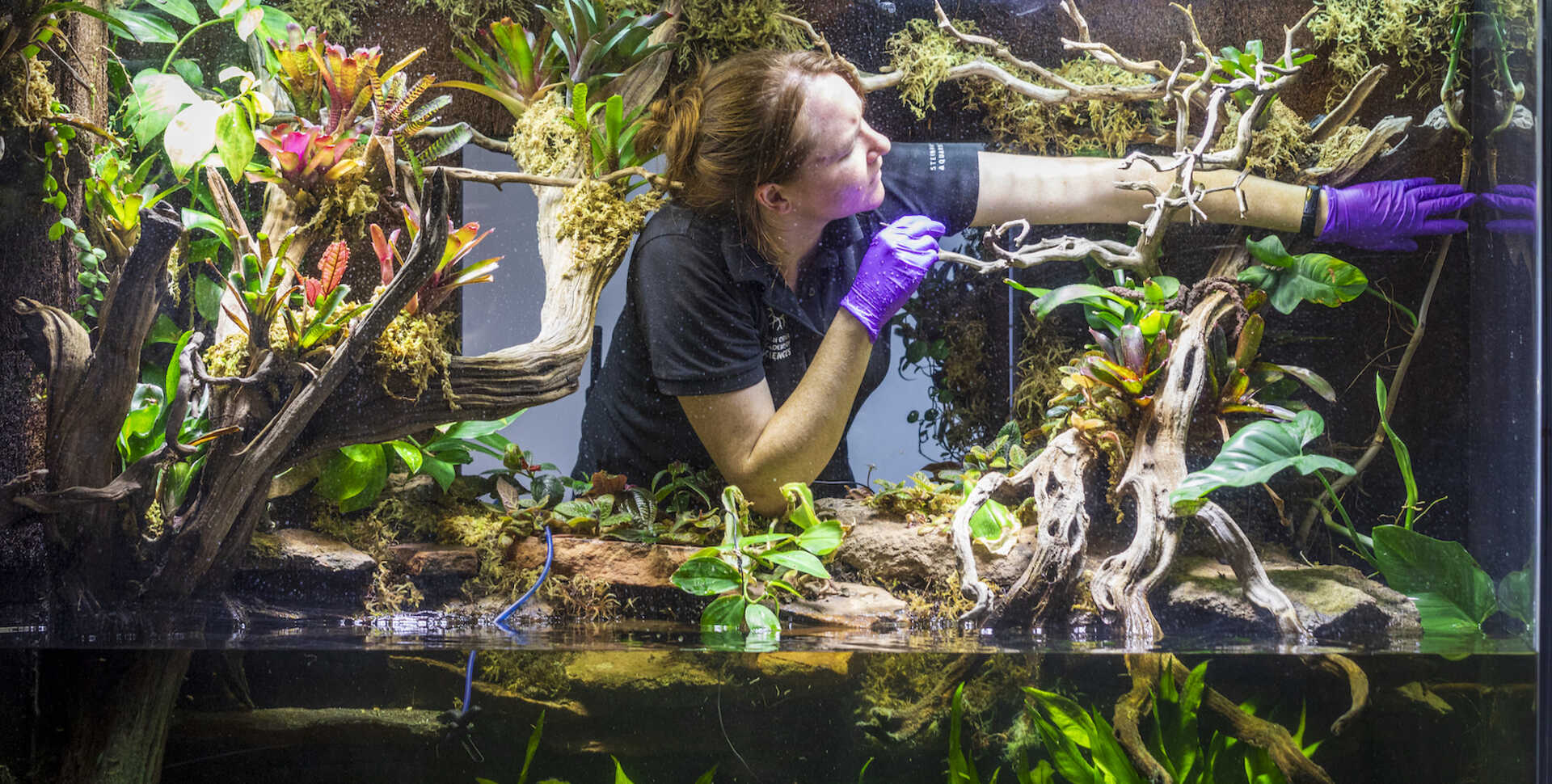
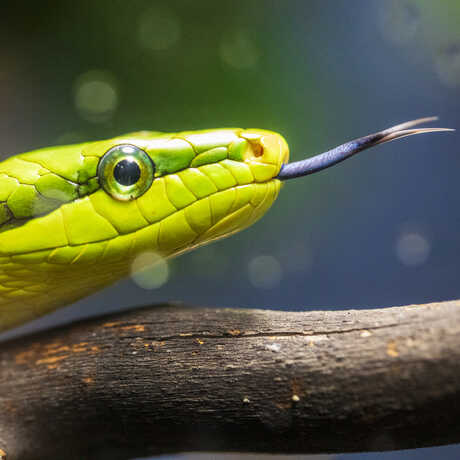
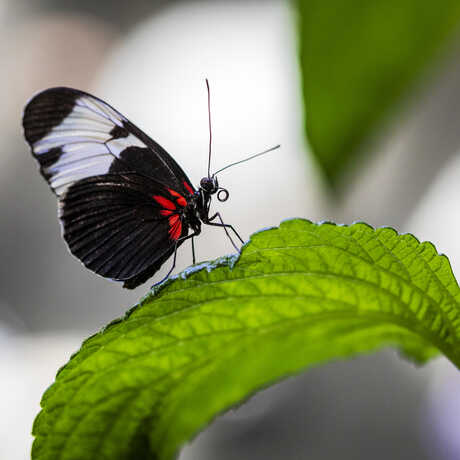
About a week before the rainforest was set to open, staff flipped on the mist machines, fogging up the glass dome and simulating raindrops that plopped from the leafy canopy down to the rainforest’s floor. Soon, the rainforest had returned to its balmy, humid conditions, ready to receive the tropical animals who call it home.
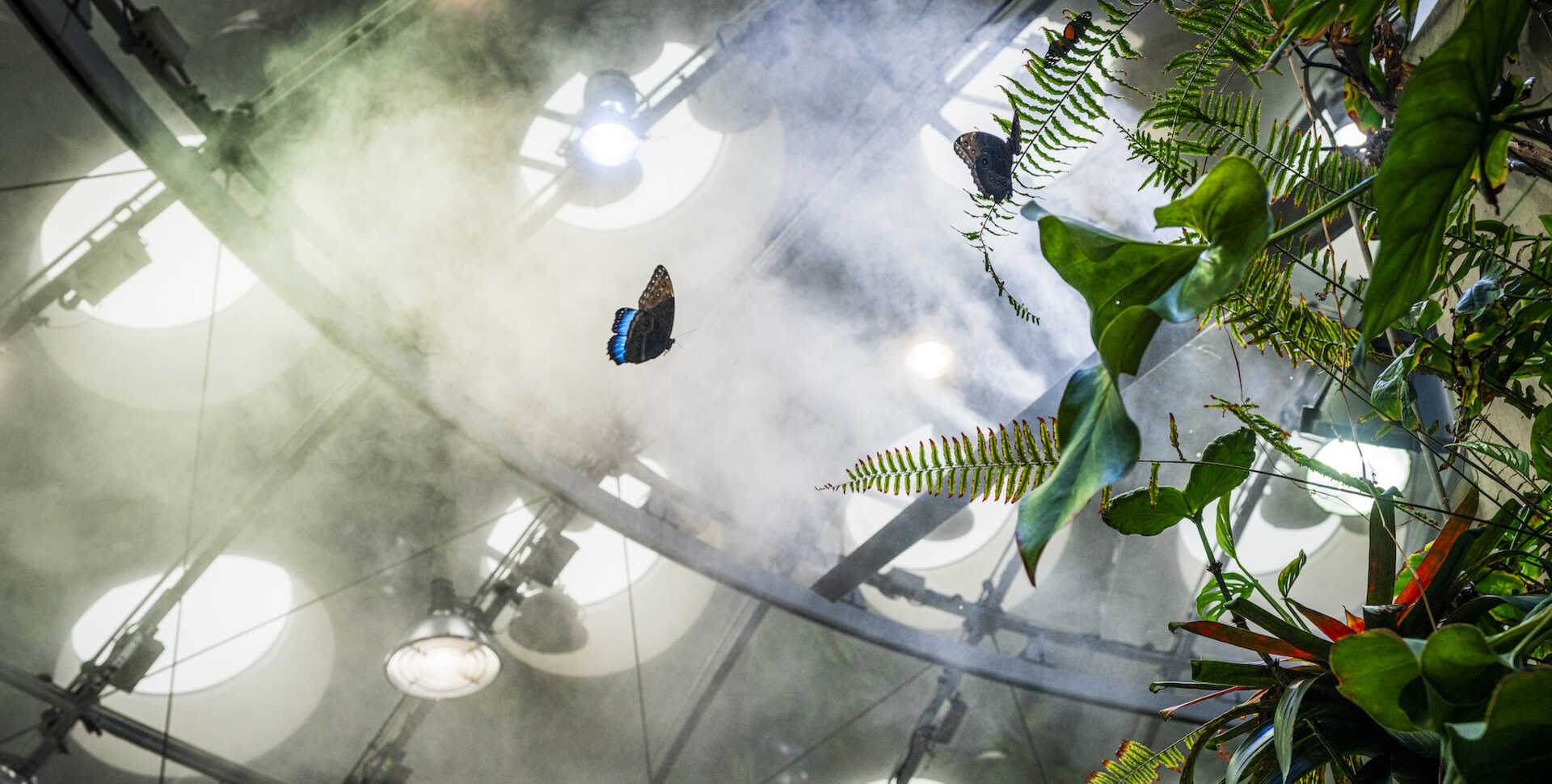
But with more than a thousand fauna held in one 90-foot glass structure, it’s near impossible to reintroduce the creatures all at once. Academy staff staggered the animals’ return, starting with hundreds of ants and butterflies, including dozens of sky-blue morpho butterflies.
In the on-site butterfly emergence chamber, our biologists introduced new butterfly pupae. Tiny paper kites, green birdwings, and magnificent owl butterflies poked out of their chrysalis shells, ready to join the nearly 500 butterflies floating in the rainforest dome nearby.
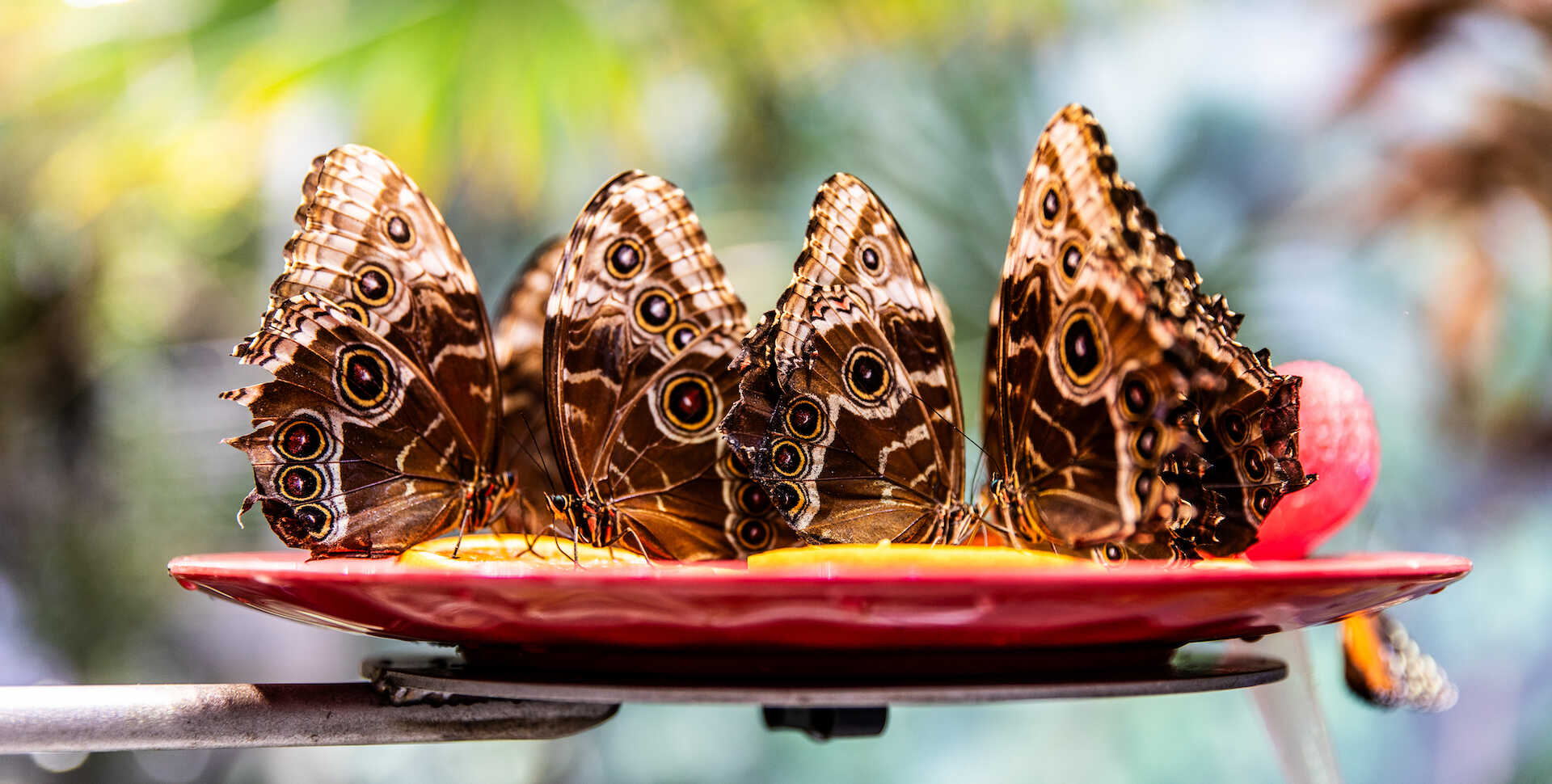
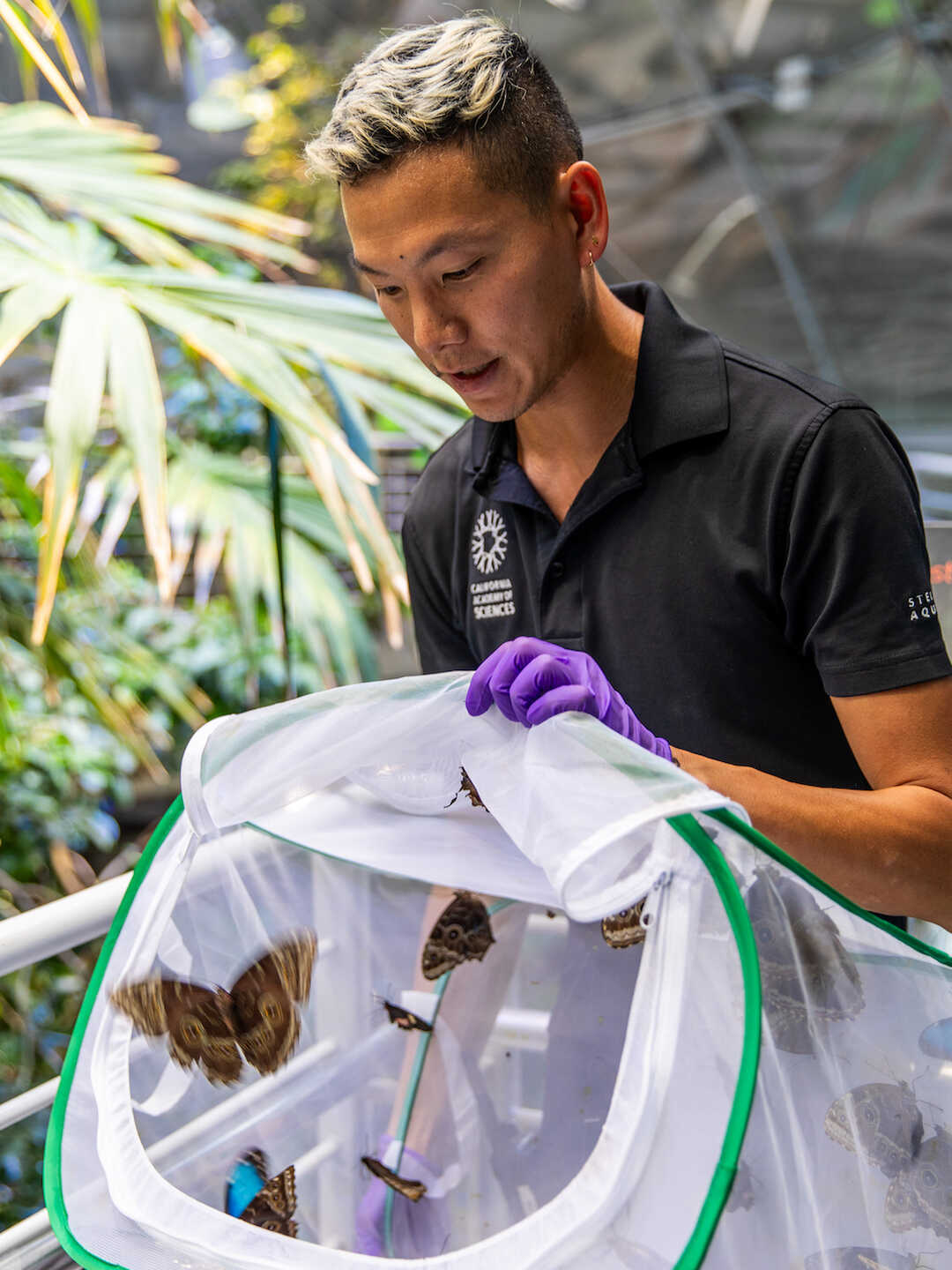
Biologist Tim Wong releases a flock of newly hatched blue morpho and owl butterflies. Nicole Ravicchio © 2023 California Academy of Sciences
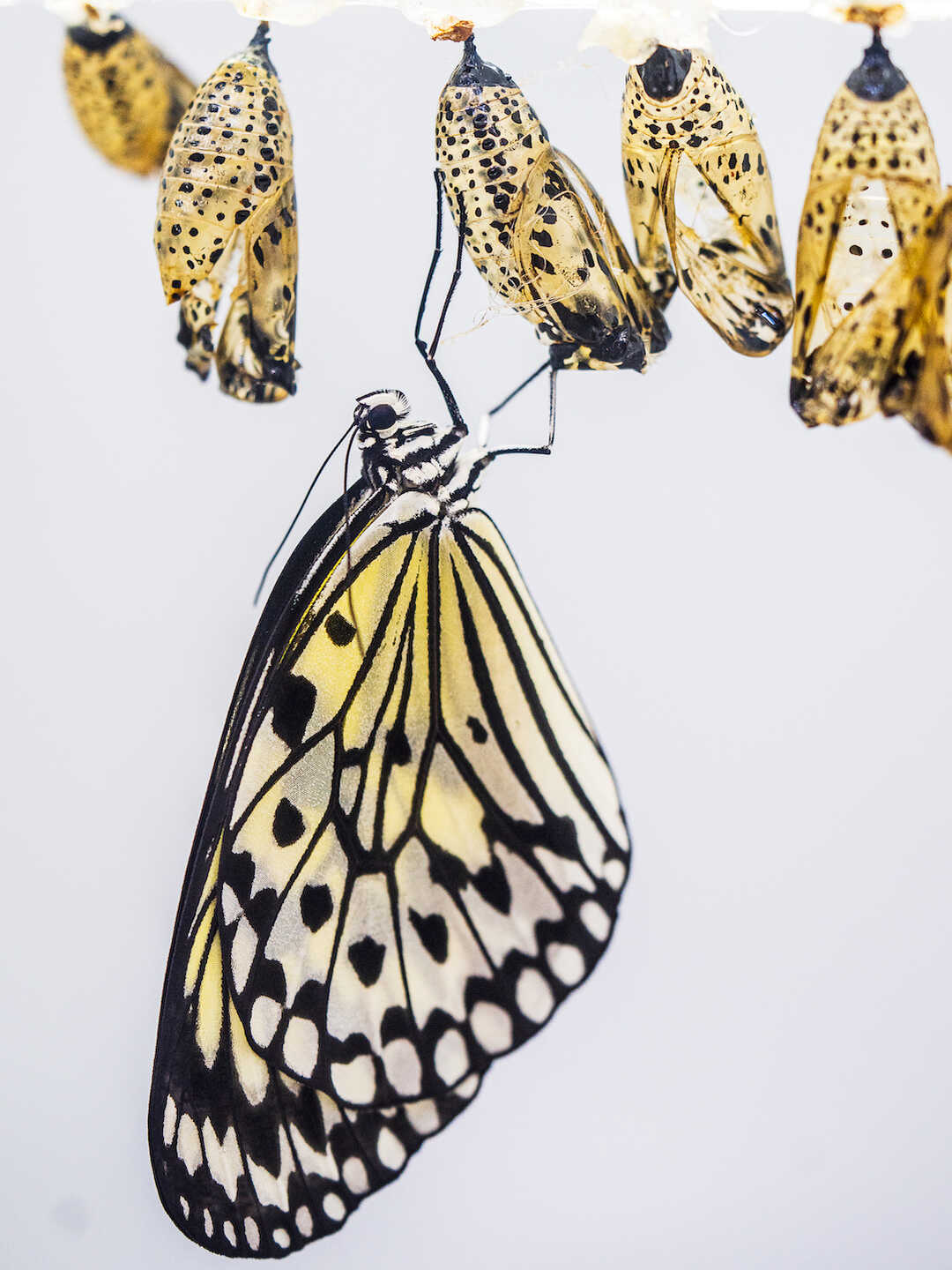
A paper kite butterfly (Idea leuconoe) rests after hatching from its chrysalis. Gayle Laird © 2023 California Academy of Sciences
Four days before opening, it was reptile and amphibian day: Our crews reintroduced 39 pebble-sized glass frogs, a southeastern girdled lizard, and one red-tailed ratsnake into their new leafy enclosures. Many of the rainforest’s fauna received home renovations: The Panamanian golden frogs—a yellow-and-black spotted species extinct in the wild—came home to a larger, bubbling waterfall, which increases the oxygen flow in their tank.
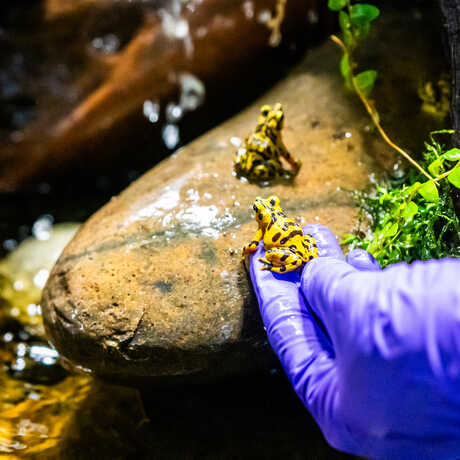
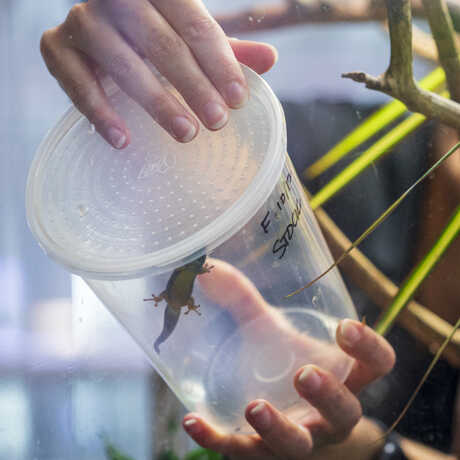
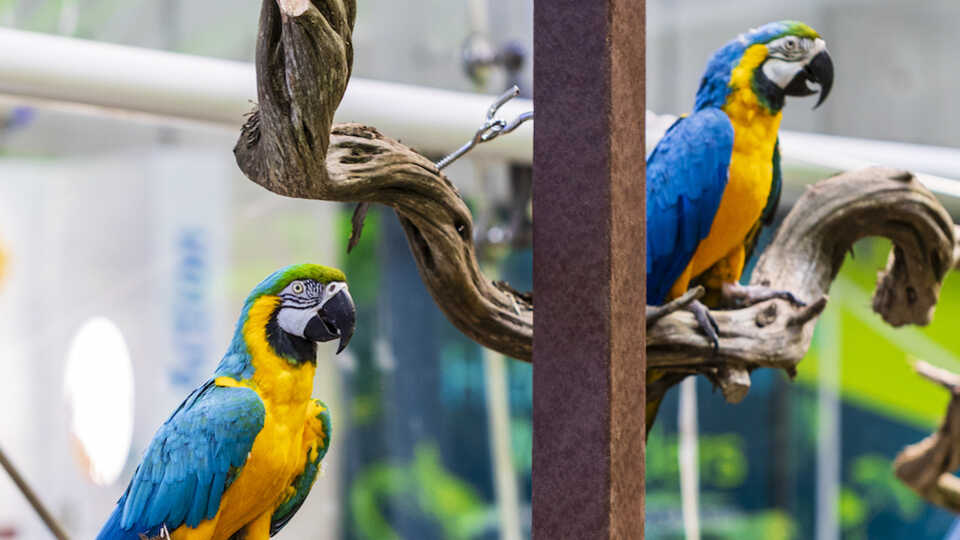
Our team constructed new perches for the rainforest’s beloved blue-and-yellow macaws, Barney and Callie, who have lived in the rainforest since 2009 and 2011, respectively. The new design provides them more space, the branches have more natural movement, and the perches will be easier for staff to replace as they get chewed down.
Gayle Laird © 2023 California Academy of Sciences
Two days before opening, we started to hear the distinct cacophony of butterfly wings, rustling leaves, and chirping birds. Invertebrates crawled back to the rainforest that day too, as staff plopped massive orb weavers into enclosures and on branches along the dome’s ramp; these spiders the size of a clementine immediately got to work spinning their intricate webs and traps.
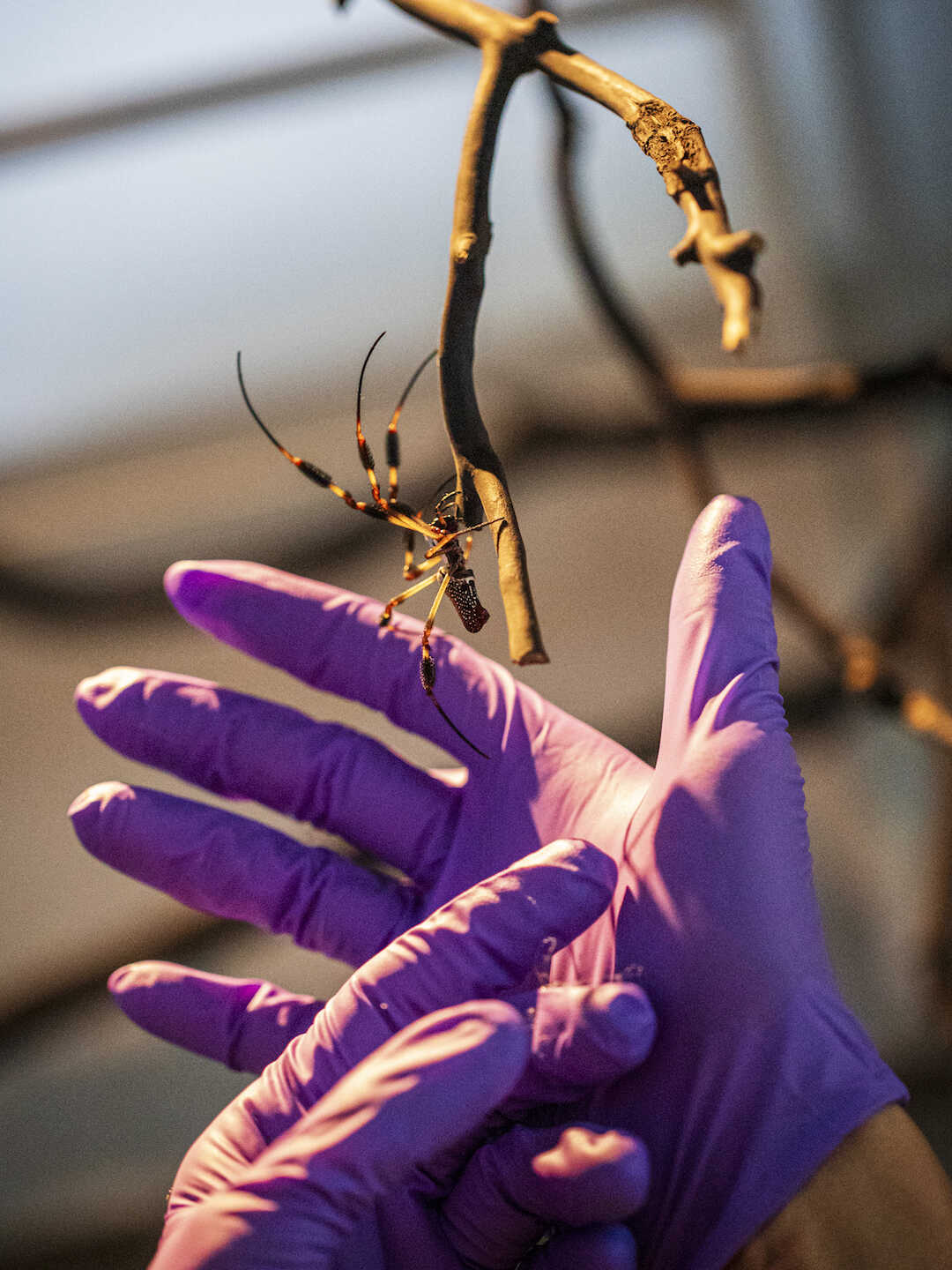
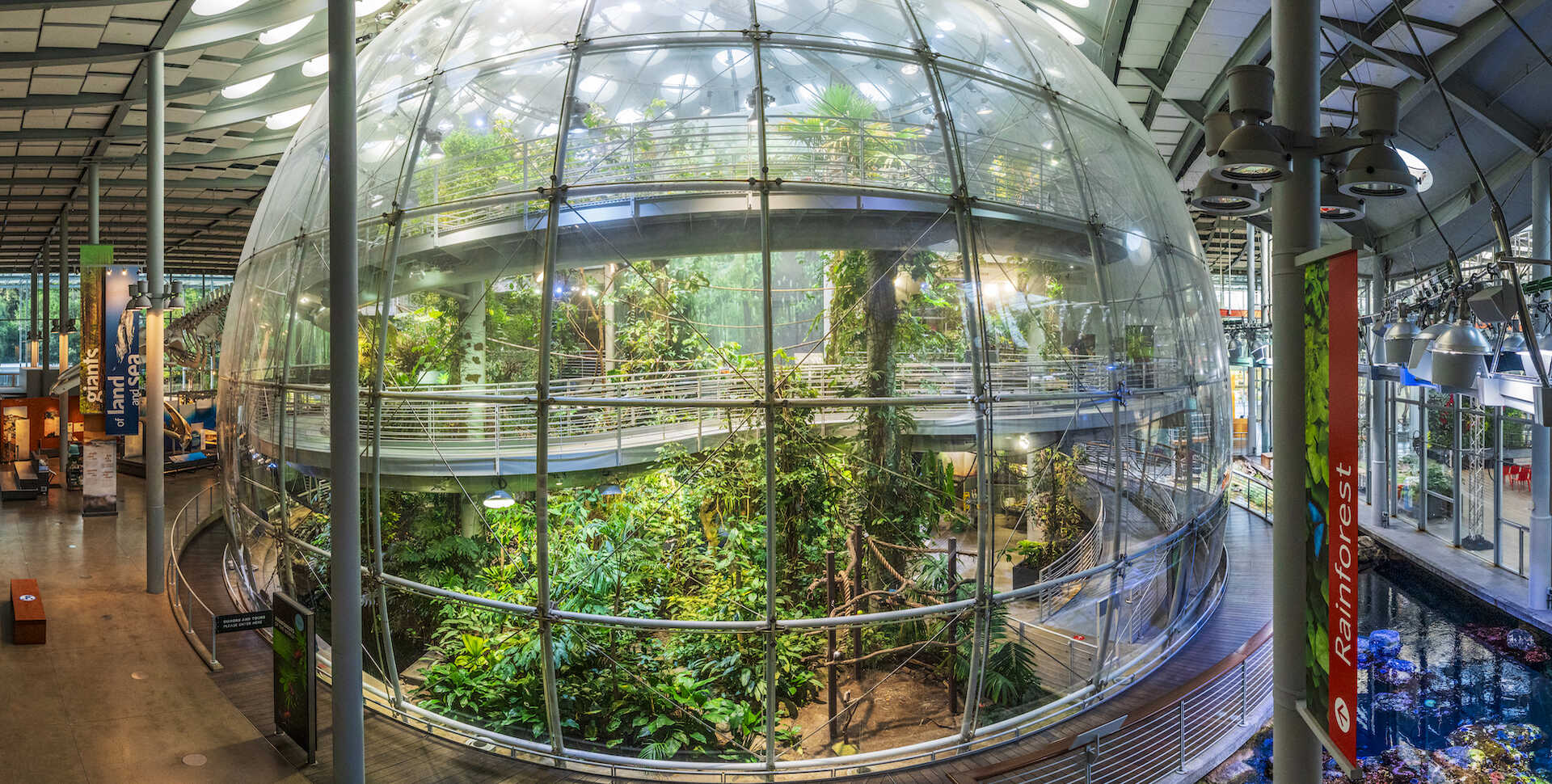
As part of Osher Rainforest’s planned closure, most animals were removed from the exhibit and temporarily housed behind the scenes—the first time the Academy has done so since the rainforest opened in 2008. Fifteen years of 85-degree heat, high humidity, and simulated rainfall took a real toll on the dome’s structure.
The absence of fauna made it easier for Academy crews to make bigger structural repairs that would have otherwise disturbed the creatures on exhibit. Only tropical, freshwater fish housed in the Amazon Flooded Forest stayed in their 100,000-gallon tank during the closure, protected from potential debris by a large net.
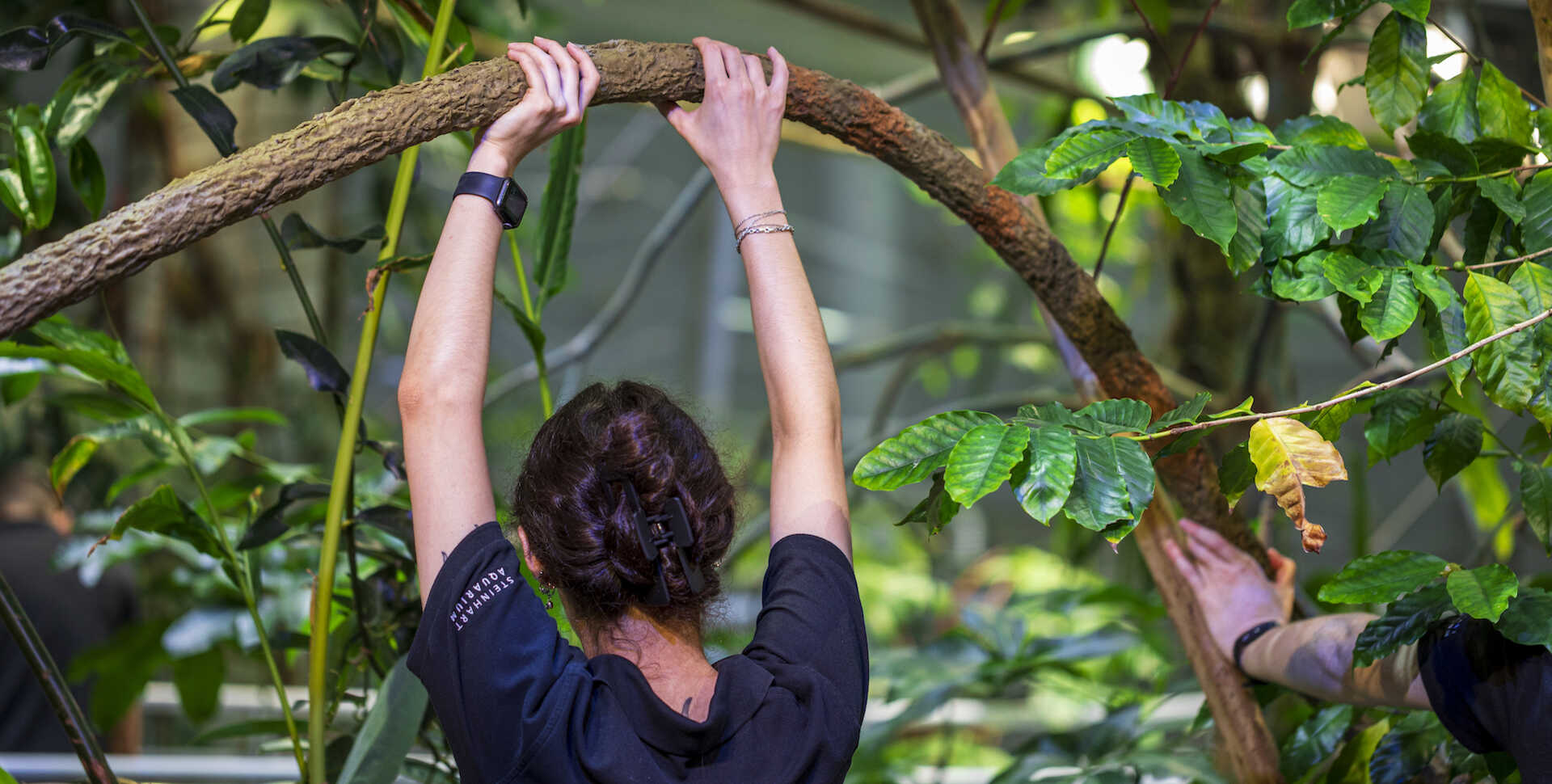
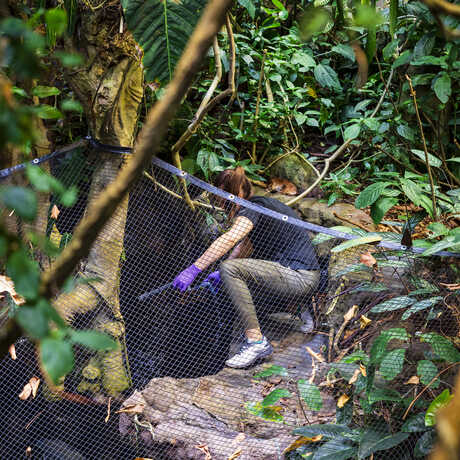
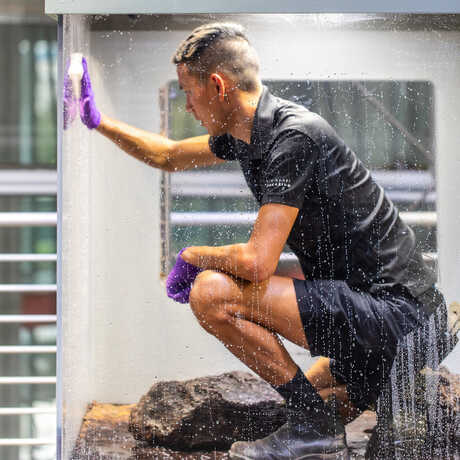
Most of the changes won’t be noticeable to the average Academy visitor, but our animal care team hopes extensive enclosure refurbishment—in addition to daily, regular habitat maintenance—increases the quality of life for the animals housed in our care.
“Roughly 90% of the rainforest’s exhibits were hollowed out, bleached, sanitized, and given new substrate,” said Kelsey Paulling, an Academy biologist. “I’m so happy to see Osher Rainforest come back to life, and to get to put the animals back in their homes.
